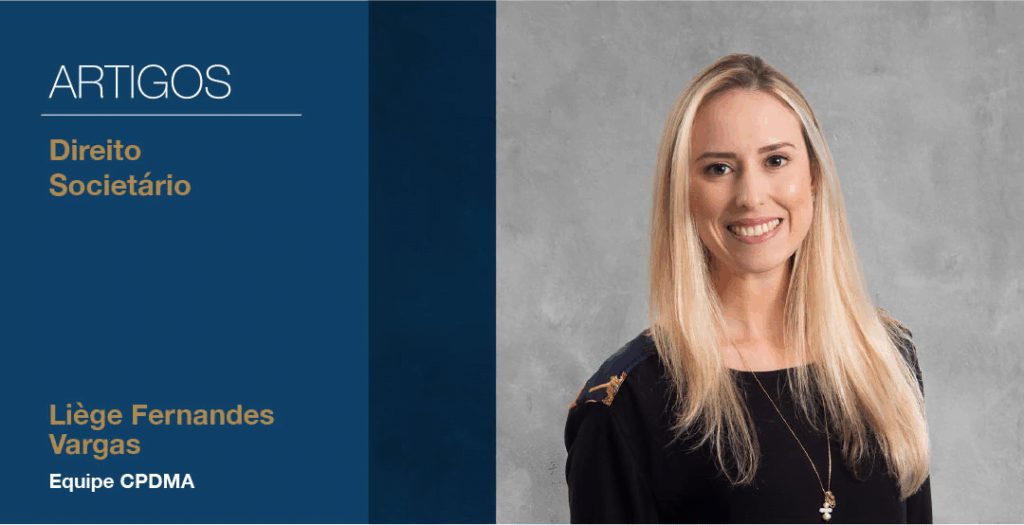
Nas últimas semanas, ouviu-se bastante falar no caso da atriz Larissa Manoela envolvendo o seu patrimônio particular e administração de seus bens pelos pais. Em resumo, a atriz iniciou sua carreira aos 04 (quatro) anos de idade e teve a administração do seu patrimônio sempre realizada pelos pais. Todavia, agora que Larissa Manoela completou 22 (vinte e dois anos), tomou ciência de que seu patrimônio, estimado em R$ 18.000.000,00 (dezoito milhões de reais), estava concentrado dentro de uma empresa holding, na qual figura como sócia minoritária, com 2% de participação, e os pais com o controle majoritário [1].
Casos como este vêm sendo cada vez mais noticiados pelos meios de comunicação e chamam a atenção para um movimento em sentido contrário ao que se tornou comum ao longo do tempo.
Usualmente, o movimento nas constituições de holdings patrimoniais e familiares costuma ser realizado pelos ascendentes (pais ou avós), que concentram maior parte do patrimônio familiar, para posteriormente passarem o patrimônio aos descendentes (filhos ou netos).
Todavia, com a mudança do mercado e o avanço tecnológico e midiático, cada vez mais se ouve falar no movimento inverso, na qual os jovens influencers têm iniciado a vida profissional prematuramente, com os pais vindo a administrar as suas carreiras, assim como ocorreu no caso antes referido, que hoje possui um escopo de trabalho muito além da representação de personagens na televisão, sendo proprietária de canais, marcas e etc.
Diante desses fatos, pode também ser uma escolha dos pais (genitores) optar pela concentração do patrimônio dos menores dentro de uma sociedade holding, objetivando uma (I) concentração e organização do patrimônio numa pessoa jurídica; (II) facilitação na governança; (III) redução da carga tributária – a depender dos tipos de operação/atividades a serem realizadas pela empresa; (IV) autonomia de gestão; (V) separação das figuras da pessoa física e pessoa jurídica; etc.
Quanto aos aspectos legais do tema, observa-se que antes do momento de o jovem atingir a maioridade (18 anos), ele é considerado como absolutamente incapaz para a prática dos atos da vida civil (até os 16 anos) e relativamente incapaz (dos 16 aos 18 anos), sendo necessário, até os 16 anos, a sua representação pelos seus pais, e após, até os 18 anos, que seus pais o assististam na prática dos atos.
Em razão disso, o jovem profissional, até atingir a maioridade legal, tem o controle de seu patrimônio particular sempre realizado pelos seus representantes legais ou assistentes (o mais das vezes os pais).
Segundo o art. 1.689 do Código Civil, enquanto os filhos forem menores de idade, os pais serão os usufrutuários dos seus bens, bem como terão autoridade para administrá-los. Em relação ao primeiro – usufruto legal – os pais têm autonomia para usufruir dos rendimentos dos bens tanto em prol dos filhos quanto da entidade familiar, utilizando o patrimônio para pagar despesas despedidas com a educação, saúde, alimentação ou lazer. Já em relação ao segundo – administração dos bens – os pais devem preservar o patrimônio dos filhos, evitando a sua depreciação ou diminuição.
Ademais, os pais estão impossibilitados de alienar ou gravar ônus reais em imóveis de propriedade dos filhos, bem como contrair obrigações, exceto em extrema necessidade, situação em que será necessária autorização judicial.
Diante disso, ainda que os pais tenham o controle patrimonial e usufruto dos bens do seu representado/assistido, há previsões legais que impossibilitam o desfazimento ou redução do patrimônio sem autorização judicial. Inclusive, há previsão legal determinando que, quando o menor atingir a idade de 16 anos, os valores recebidos no exercício de atividade profissional, bem como os bens adquiridos com tais recursos, devem ser excluídos do usufruto ou da administração dos pais.
O assunto requerer aprofundamento de análise pois, através de estruturas societárias é possível que, após o atingimento da maioridade legal (ou alcance da capacidade relativa para prática dos atos da vida civil), os representantes legais continuem usufruindo e administrando os bens do representado, inclusive tendo a propriedade majoritária dos bens concentrados em uma holding familiar (controle majoritário), ao invés de concentraram a propriedade dos bens em nome do representado/assistido.
Em linhas gerais, há alguns tipos jurídicos definidos como holding (pura, mista ou patrimonial), mas aqui se concentra somente na análise da holding patrimonial.
O objetivo de constituir uma holding patrimonial é principalmente a proteção e concentração do patrimônio familiar dentro uma única pessoa jurídica, na qual os proprietários dos bens colocam o seu acervo patrimonial para dentro da empresa (geralmente através da integralização de bens ao capital social ou pela aquisição direta de bens pela pessoa jurídica). O referido modelo acarreta, em geral, na redução da carga tributária e pode facilitar no momento da sucessão da herança, inclusive com a economia do imposto de transmissão (ITCMD).
Portanto, há benefícios para a constituição das chamadas holdings, ainda que o patrimônio seja oriundo do trabalho artístico de menores de idade. O que de fato é importante preservar é o patrimônio do menor, que mesmo representado pelos pais, é o verdadeiro proprietário dos bens e pode no futuro requerer uma prestação de contas das práticas financeiras realizadas.
Observa-se, ainda, que, mesmo após encerramento do usufruto e da administração do patrimônio pelos pais, estes podem permanecer na posição de gestores do patrimônio, através do cargo de administradores da empresa, desde que sejam devidamente remunerados para isso, uma vez que estão prestando uma atividade à empresa (retirada de pró-labore com os devidos descontos das verbas trabalhistas e fiscais).
Por fim, ressalta-se que cada caso deve ser analisado em sua particularidade e planejado de acordo com as necessidades de cada parte.
[1] Fonte: Programa do Fantástico, transmitido pela TV Globo, nas datas de 13 e 20/08/23.